











| Willow Emerald Damselfly (Chalcolestes viridis (Vander Linden, 1825)) |












|
|
Scientific name: Chalcolestes viridis (Vander Linden, 1825) Common name: Willow Emerald Damselfly Other names: Western Willow Spreadwing. Old scientific name: Lestes viridis. French name: Leste vert, Leste de cuivre. Order: Odonata Suborder: Zygoptera Family: Lestidae Wingspan: 50 to 60 mm. Biotope: Various stagnant or slow running water zones having banks bordered with willows, alders or birches. Geographic area: Southern and central Europe. North Africa. Replaced by the Eastern Willow Spreadwing (Lestes parvidens) in the eastern Mediterranean region (Croatia, Greece, etc.) Flight time: Late August to early October. |
The Willow Emerald Damselfly is a large damselfly with a green metallic colour. It is used to perching high on vegetation, holding its wings open. Late summer, the colour changes with copper sheen. You can tell it apart with the spur-like marking below the green lateral stripes on the thorax. The pterostigmas are elongated, pale brown to pale beige and circled by black veins. There is never any blue colour on the abdomen's tip. The eggs are often laid in tandem. Females lay the eggs under the bark of trees whose branches grow over water. The eggs over winter. Late spring, larvae fall down into water. Their growth cycle, including 10 moults, will not last more than 3 months before emerging as imagos. The Emerald Spreadwing (Lestes dryas) also shows a spur-like marking on the side of the thorax but it is a smaller size. You can distinguish it from the Willow Emerald Damselfly by the blue colour of the upper side of the second abdominal segment and by the dark pterostigmas. The Eastern Willow Spreadwing (Lestes parvidens), east of the Mediterranean sea (Italy, Croatia, Greece, etc.), also shows a spur-like marking on the side of the thorax. The only way to tell it apart from the Willow Emerald Damselfly is to have a close look at the male's appendages (the black tip of the white cercoids does not extend on both sides like on the Willow Emerald Damselfly). The pterostigmas are a little darker than those of the Willow Emerald Damselfly. However the two species only fly together in the Italian Peninsula. |
| [To know more about the Willow Emerald Damselfly] [Next picture] [Top] |
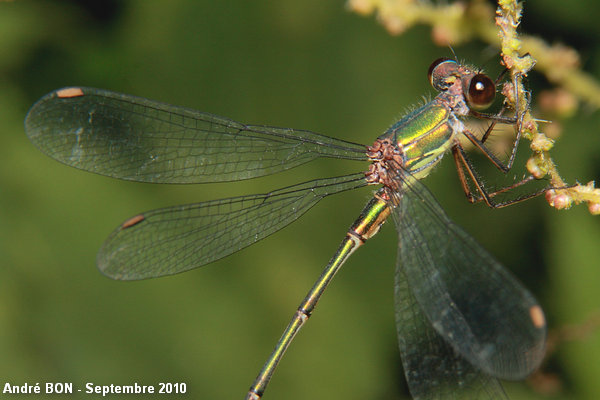
|
I have observed many Willow Emerald Damselflies in September 2010 and often rather far from water. You can see the spur-like mark on the side of the thorax and the pale pterostigmas on this picture. |
| [To know more about the Willow Emerald Damselfly] [Next picture] [Previous picture] [Top] |
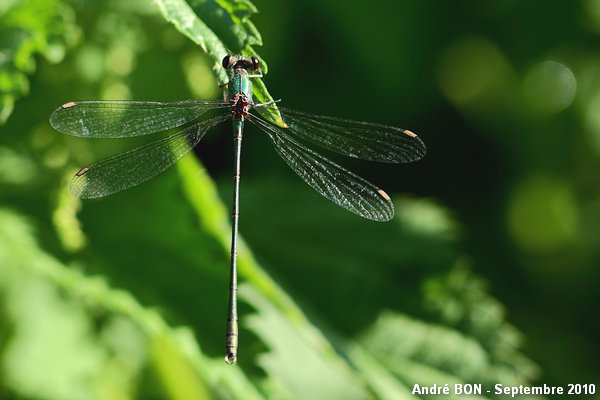
|
Willow Emerald Damselflies are used to landing on vegetation with their wings open. |
| [To know more about the Willow Emerald Damselfly] [Next picture] [Previous picture] [Top] |
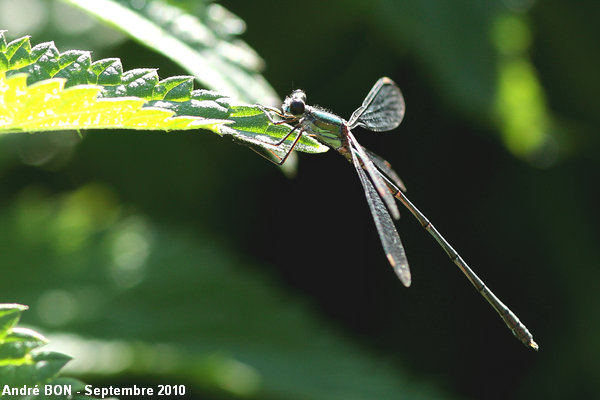
|
Side view after an upper side view. As these damselflies are not very shy, I will try to shoot close-up pictures of the male's cercoids next year. |
| [To know more about the Willow Emerald Damselfly] [Next picture] [Previous picture] [Top] |
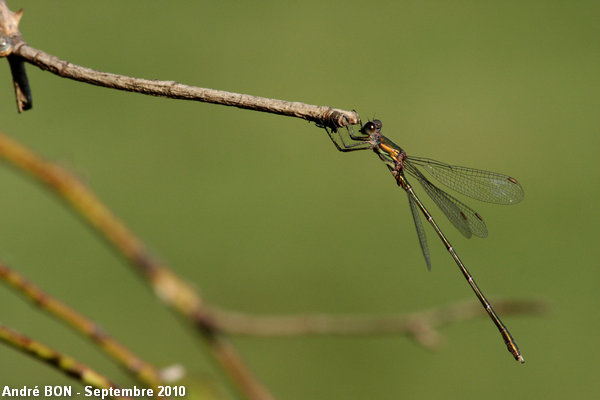
|
This damselfly, observed on the vegetation bordering stagnant water, is beginning to show some copper colour. |
| [To know more about the Willow Emerald Damselfly] [Next picture] [Previous picture] [Top] |
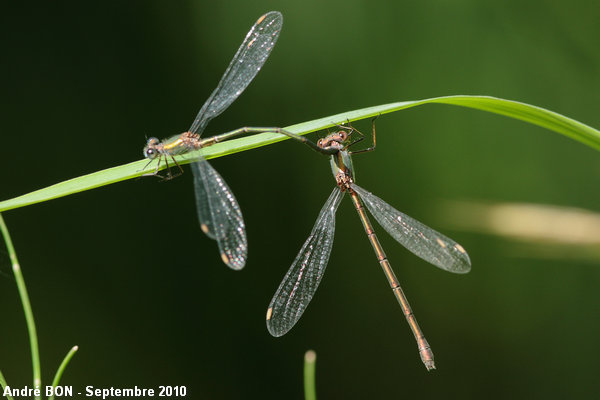
|
Mating. |
| [To know more about the Willow Emerald Damselfly] [Next picture] [Previous picture] [Top] |
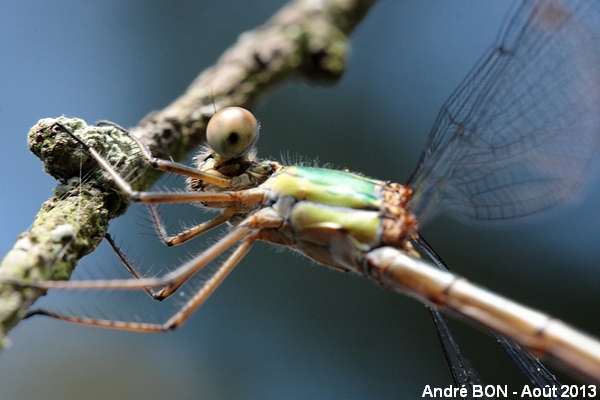
|
This Willow Emerald Damselfly came to my garden to have look . Its large eye is looking at me ;-) |
| [To know more about the Willow Emerald Damselfly] [Next picture] [Previous picture] [Top] |
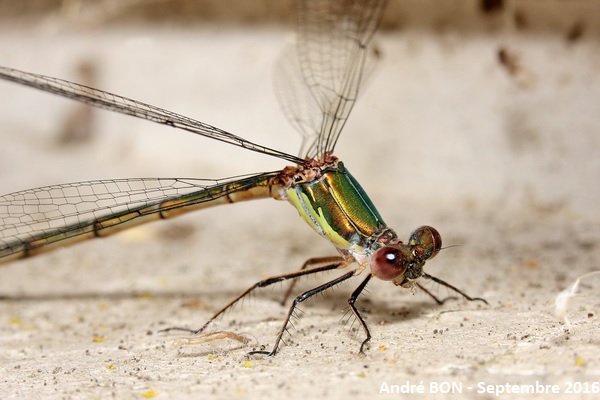
|
This time the visitor to the garden showed very little mobility, I don't know why. I took the opportunity to shoot close-up pictures, taking all my time. |
| [To know more about the Willow Emerald Damselfly] [Next picture] [Previous picture] [Top] |
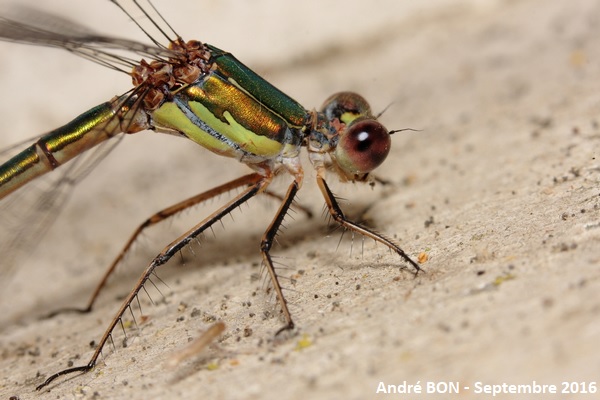
|
Side view. |
| [To know more about the Willow Emerald Damselfly] [Next picture] [Previous picture] [Top] |

|
Front view. |
| [To know more about the Willow Emerald Damselfly] [Next picture] [Previous picture] [Top] |
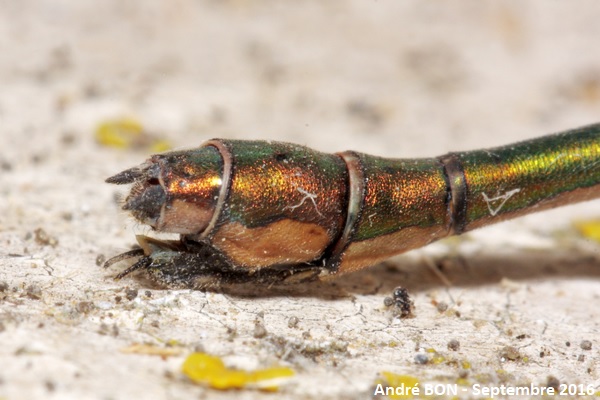
|
The tip of the abdomen indicates a female. The lower part is the ovipositor with dark edges and light colour on the underside. |
| [To know more about the Willow Emerald Damselfly] [Next picture] [Previous picture] [Top] |
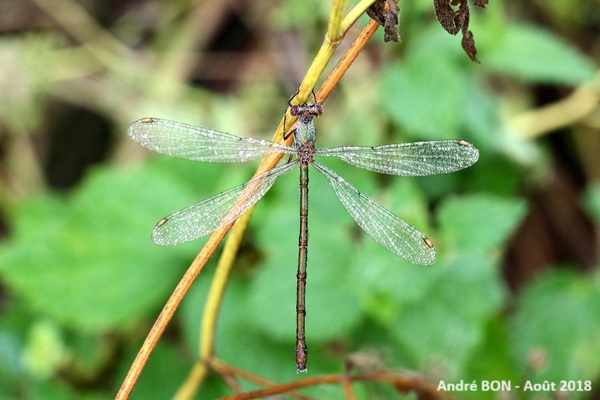
|
The morning fogs of late summer sometimes make it possible to do nice observations. This dewy Willow Emerald Damselfly is a beautiful subject for a photoshoot. |
| [To know more about the Willow Emerald Damselfly] [Previous picture] [Top] |
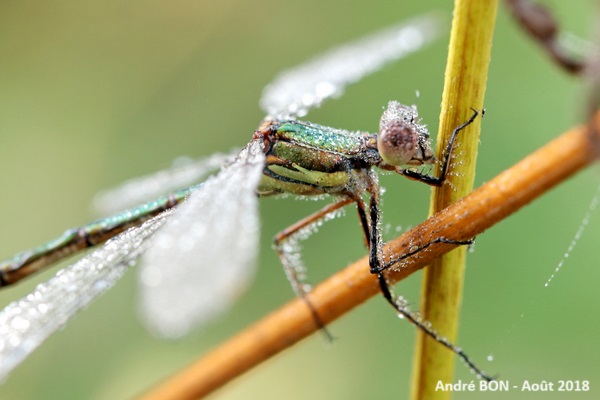
|
Here is the best photo. I think I could do better now with better control of depth of field, perhaps with some photo stacking. I'm waiting to find a nice subjectů |